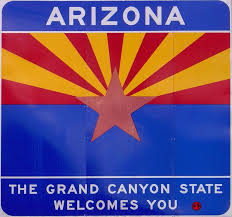Americans finally have a real chance to “clean up the mess in Washington.” That’s the implication of the news that the Arizona legislature has called the first national “convention of states” in over 150 years.
The conclave will meet in Phoenix on September 12. Its purpose is to plan for a later convention to propose a balanced budget amendment to the U.S. Constitution.
Contrary to some histrionic claims, neither the planning assembly nor the subsequent gathering will be constitutional conventions. Each will be a taskforce limited to narrow topics. Any amendment suggested by the later convention would become part of the Constitution only if approved by 38 states.
State lawmakers nationwide have become increasingly frustrated by federal dysfunction. One complaint is Congress’s persistent failure to balance its budget, which has resulted in a skyrocketing national debt.
The Constitution’s chief mechanism for addressing such long-term problems is a special kind of convention of the states the Constitution calls a “convention for proposing amendments.” This assembly must be called if two-thirds of the state legislatures (34 of 50) demand it. Most state legislatures already have done so.
The Arizona legislature is among them, and it apparently believes the 34-state threshold will be crossed soon.
Convention History
Although the last national convention of states was held in 1861, such gatherings — both national and regional — have had prominent roles in American history.
Before American Independence, inter-colony conventions deliberated over defense matters and relations with the Indians and with the British. Examples include the Stamp Act Congress (1765) and the First Continental Congress (1774). After Independence, several interstate conventions addressed defense, as well as such issues as trade and monetary inflation. In 1787, an interstate convention with an unusually broad mandate proposed the U.S. Constitution.
Later conventions of the states have been far more limited than the Constitutional Convention. Gatherings in 1814 and 1861 informally proposed specific constitutional amendments. An 1889 regional convention recommended uniform anti-trust laws. One of its recommendations induced Congress to pass the Sherman Anti-Trust Act the following year.Regional conventions in the 1920s, 1930s, and 1940s negotiated interstate water compacts.
The latest call is Arizona House Concurrent Resolution 2022, passed on March 30. It also requires a strictly limited conclave. It provides: “The State of Arizona respectfully calls a planning convention of the states, consisting of commissioners chosen and authorized in the manner that each respective state legislature determines… on September 12, 2017 in Phoenix.”
The planning convention will recommend (1) rules and procedures for the balanced budget convention and (2) a date and location that Congress can use when calling the balanced budget convention.
The resolution also recommends that the planning convention adopt “Mason’s Manual” — the same guide currently used by the legislatures of most states — for its parliamentary procedures.
Convention Procedure Well Understood
Despite some uninformed assertions on the subject, there is no mystery surrounding the protocols governing conventions of states. Those protocols have been firmly established for over two centuries. For example, each state has equal voting power; the convention elects its own officers; and the convention is limited by the scope of its “call.”
The Arizona resolution recognizes all these protocols.
This is the latest in a parade of events showing the state legislatures are becoming serious about addressing problems the feds refuse to face. In 2016, the Assembly of State Legislatures, a national bipartisan group, proposed rules for amendments conventions. In October, representatives from nearly all the state legislatures met in a simulated convention held in Williamsburg, Virginia in October. They adopted rules based on a set I had put together based on prior convention experience.
In addition, 10 states have demanded a convention to propose federal term limits and controls on federal power.
The American Legislative Exchange Council, a state legislative trade group, has published a popular guide to the process, which I authored.
This article first appeared in the American Spectator.








